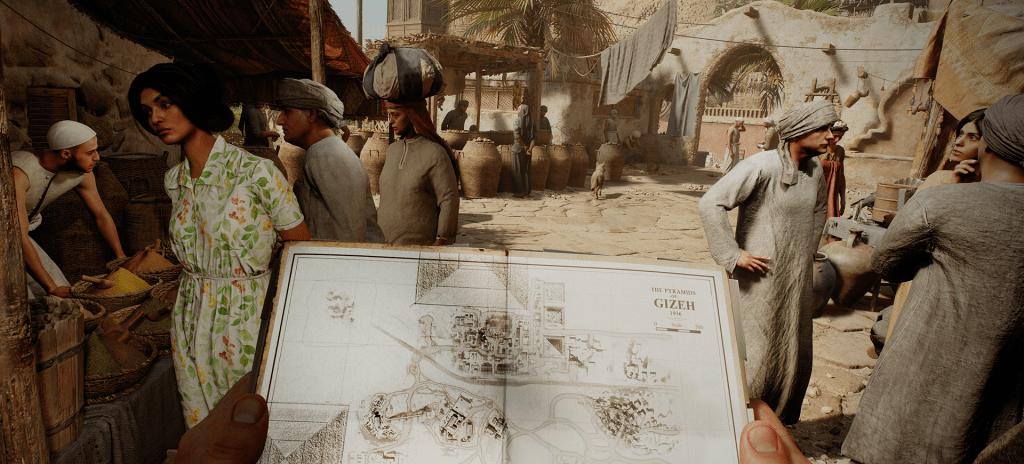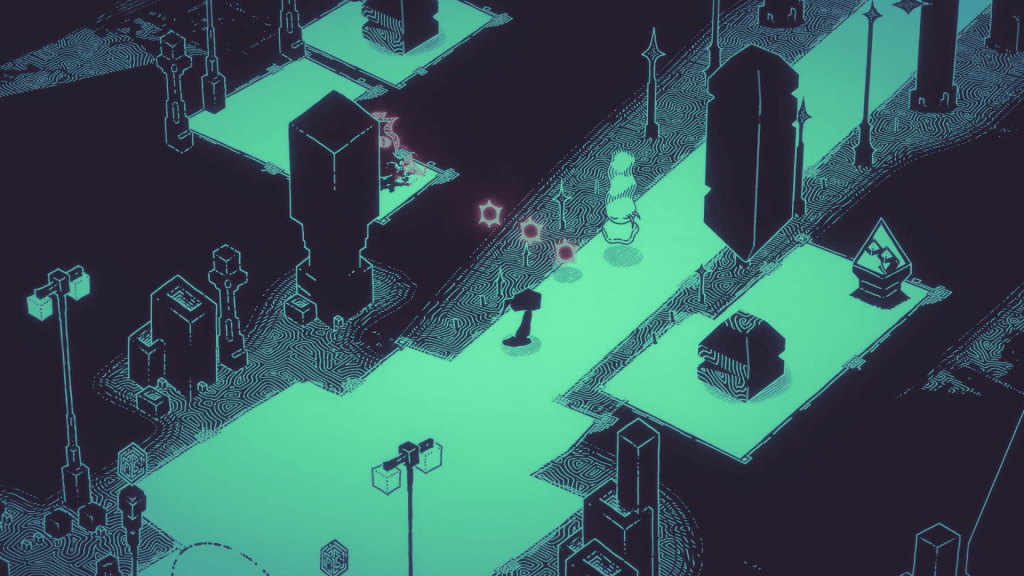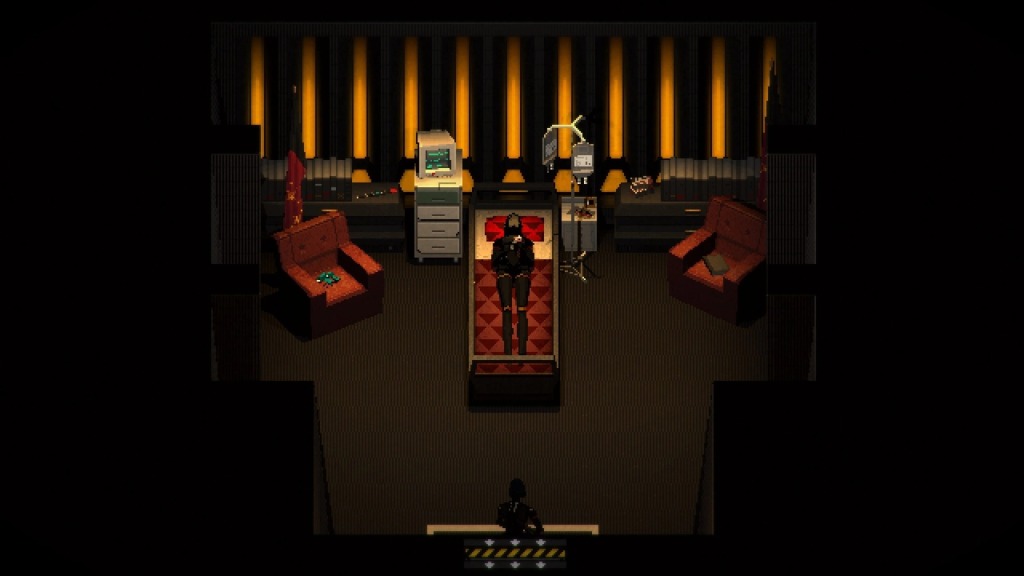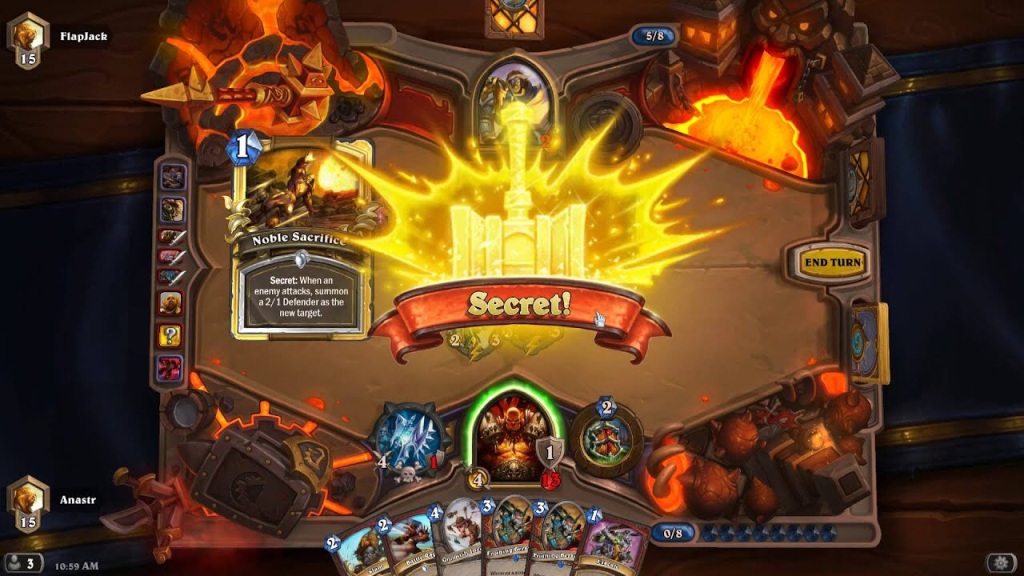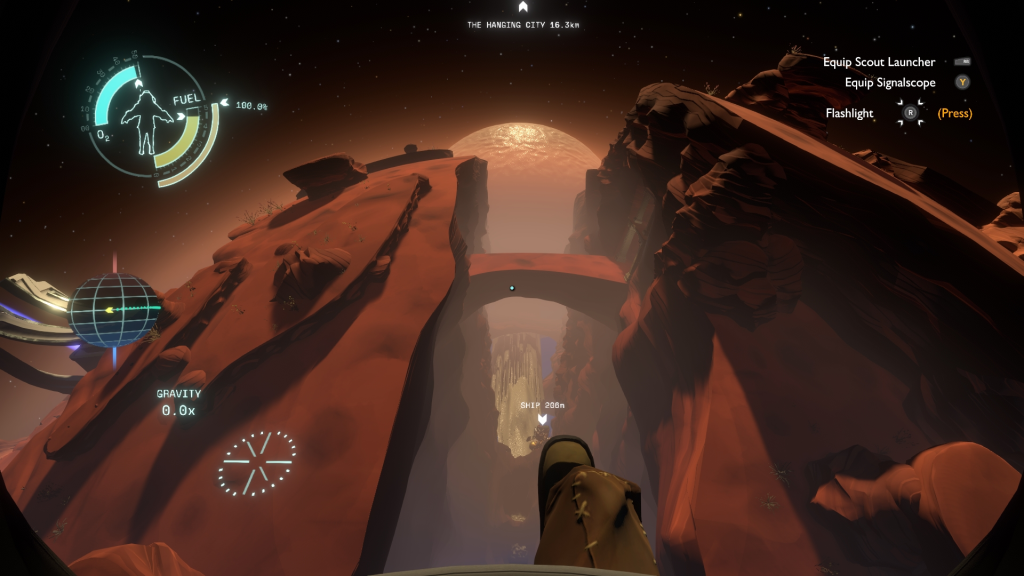Team Asobi
2024
PS5
Astro Bot has been a Game of the Year finalist just about everywhere you can look, including taking home the prize at Geoff Keighley’s The Game Awards. The successor to PlayStation 5 pack-in game Astro’s Playroom, Astro Bot takes that game’s high-polish 3D platforming and blows it out to a full game, each level a fun, playful celebration of motion. In the way that Wicked or Dune Part Two is the film of the year, Astro Bot represents the peak of industry investment. It is everything your expensive game console wants to be able to do without any of the open world cruft, microtransactions, or cinematic storytelling. This is a celebration of video games as video games rather than as an alternate vehicle for an HBO miniseries or a pure capitalist skinnerbox.
It’s pretty good!
Even compared to some Mario games, Astro Bot’s jump, speed, and responsiveness to its environment is really satisfying. If you have love for running around in this kind of space and bonking orb-shaped baddies, this game has it in spades. When you land on the ice, rather than taking on that somewhat frustrating slippery-foot feeling Ocarina of Time players know all too well, Astro Bot starts ice skating, giving you propulsive forward motion but also a fine degree of control. The air hover allows for precise landings in a way the Super Mario Sunshine F.L.U.D.D. dreams of doing.
There are nine different upgrades you can find midway through a level, and each of them gives you a new way to experience the platforming and exploration of the game. Some are fairly simple – there’s a rocket boost, a racing charge forward, a boxing glove that lets you punch harder and farther. But they also have surprising uses – the boxing gloves also let you grab onto certain objects and swing farther. One highlight is a shrinking device that lets you get through small holes and navigate new spaces – it lets you get real small and see the levels in entirely new ways. About half of them feel directly ripped from Super Mario Sunshine or Galaxy, but they are all perfectly well implemented.

These upgrades help diversify the game’s many levels, each about five minutes in length and containing somewhere between 8-12 hidden secrets to obtain. Sometimes, like in Super Mario World before it, there are secret exits that unlock new levels. Sometimes, navigating the overworld map menu in your little spaceship gives you a chance to unlock new challenge “meteorite” levels. All of these are largely really well designed platforming levels, and if you’re someone like me who laments the fact that open world games often contain kind of haphazard play spaces where you’re meant to “find the fun,” Astro Bot rejects the idea that connective tissue is what helps attach you to a video game.
In fact, it basically rejects any kind of connective tissue. Astro Bot is constantly ping-ponging between different visual pastiches on its little planetoids. You’ll play a desert tomb level – a jungle level – a tundra level – and there’s no real effort made to try to sell these as places rather than video game levels. The enemies rarely receive any more personality, meant to be pretty interchangeable between levels.
The only real sense of cohesion comes from the PlayStation brand. In every level, between one and three of the rescuable fellow bots will be costumed as a character from a different PlayStation game. It starts with you rescuing Ratchet and Rivet from the Ratchet & Clank games. Then, it’s Solid Snake, Psycho Mantis, and Gray Fox from Metal Gear Solid. This experience does not exclusively contain cameos from games as beloved as these or as distant in the past. When you complete a world, you end up playing an entire level based on one of these properties. Some of these game series have been dead for decades – others feel so new that it’s a little giving Poochie.
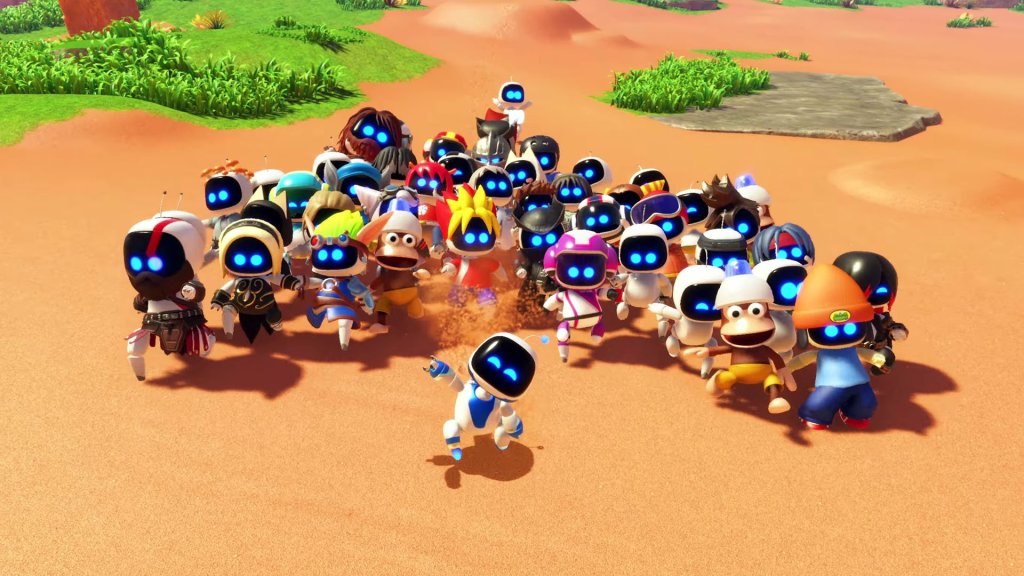
All along the way, there is a nonstop chattering of these bots. They are constantly chirping, whining, woo-hooing. It is a lot like watching the Minions from Despicable Me. I find them completely exhausting. I started to get a headache. Despite the game having a pretty good soundtrack, I had to turn the sound off entirely after an hour to shut these damn bots up.
As curmudgeonly as I know I sound, I want to give some generosity to “loving the brand.” Not because I think it’s virtuous, to be clear, but because I remember being a child. I remember playing Super Smash Bros. for the first time, encountering Ness, and being fascinated by the concept of Earthbound, a game I would eventually play and fall in love with. I remember booting up Super Smash Bros. Melee and just wanting to hang out in its non-worlds to listen to the music and experience more of these games. I remember my dad declaring war against Banjo-Kazooie because of the non-stop squawking every time you took a step in Talon Trot.
I did not want to spend more time puttering around with the (quite intricate) physics simulations in Astro Bot’s world. I was not filled with wonder playing a level inspired by LocoRoco, a game somewhat unimaginable under modern Sony leadership where their games are either live service megaliths that are too big to fail (or will be shut down the moment they do) or are better suited to an HBO TV series. I did not enjoy seeing Kat from Gravity Rush, whose developer Sony Japan was gutted, the remainder forming Team Asobi and making Astro Bot. I can only imagine what a game without all these cameos might be like, given more space to develop its own identity like Shadow of the Colossus or Okami. And yet Nintendo never released another Mother game in the US – hell, it took decades to even get Earthbound available again on the Wii U or Switch. F-Zero and Kid Icarus were given one more chance before being resigned to ports of classic games. That didn’t stop me from chasing them down.
But there is a new Okami coming out! A new game from Shadow of the Colossus developer Fumito Ueda! The Gravity Rush director, Silent Hill creator Keiichiro Toyama, came out with a new game this year, a reimagining of Siren called Slitterhead. Slitterhead, dude! Whatever problems the game industry might have – and there are many – Astro Bot is not responsible for them. I hope it inspires young players to seek out these old classics, and I hope it inspires Sony and its colleagues to make those classics readily available.

